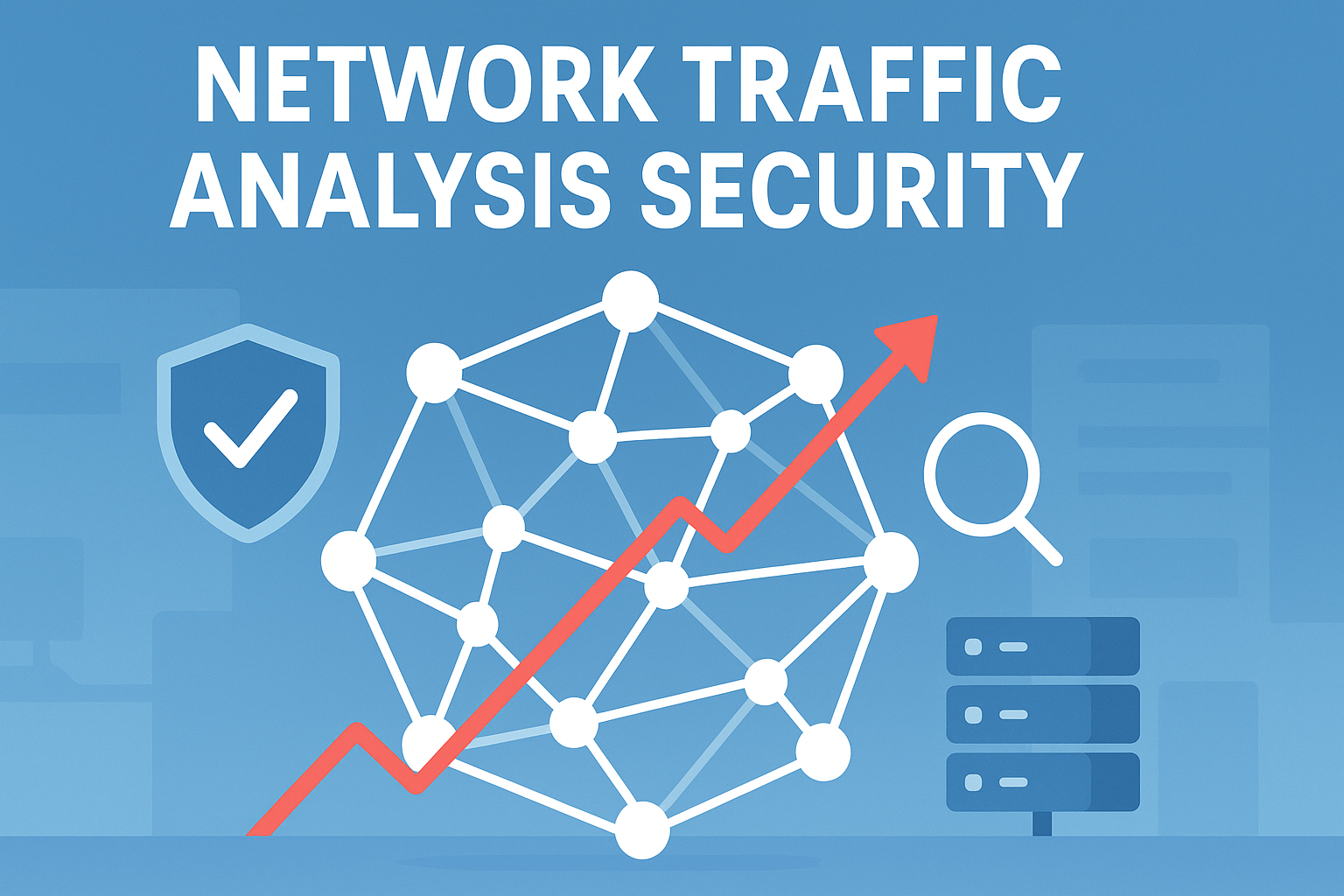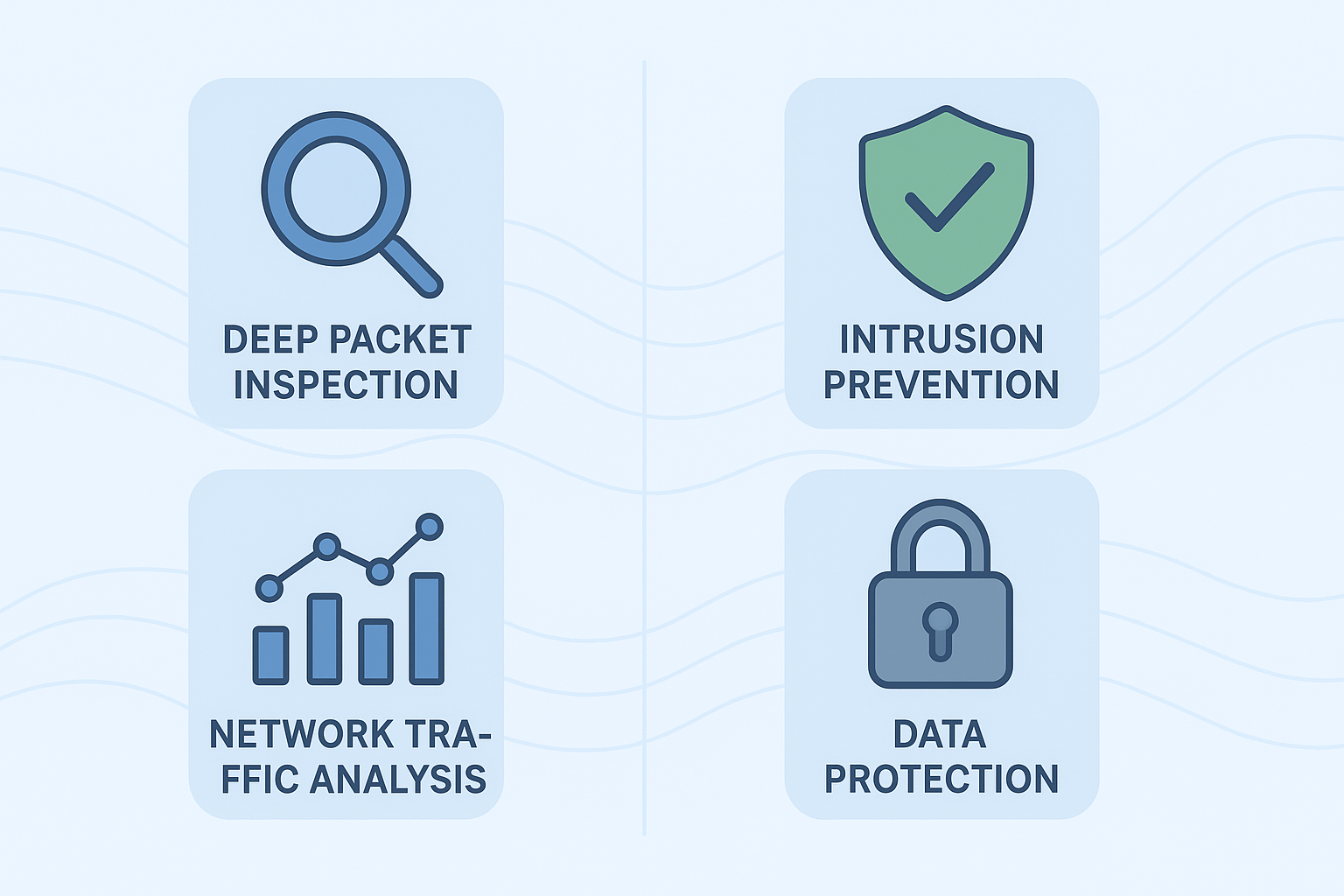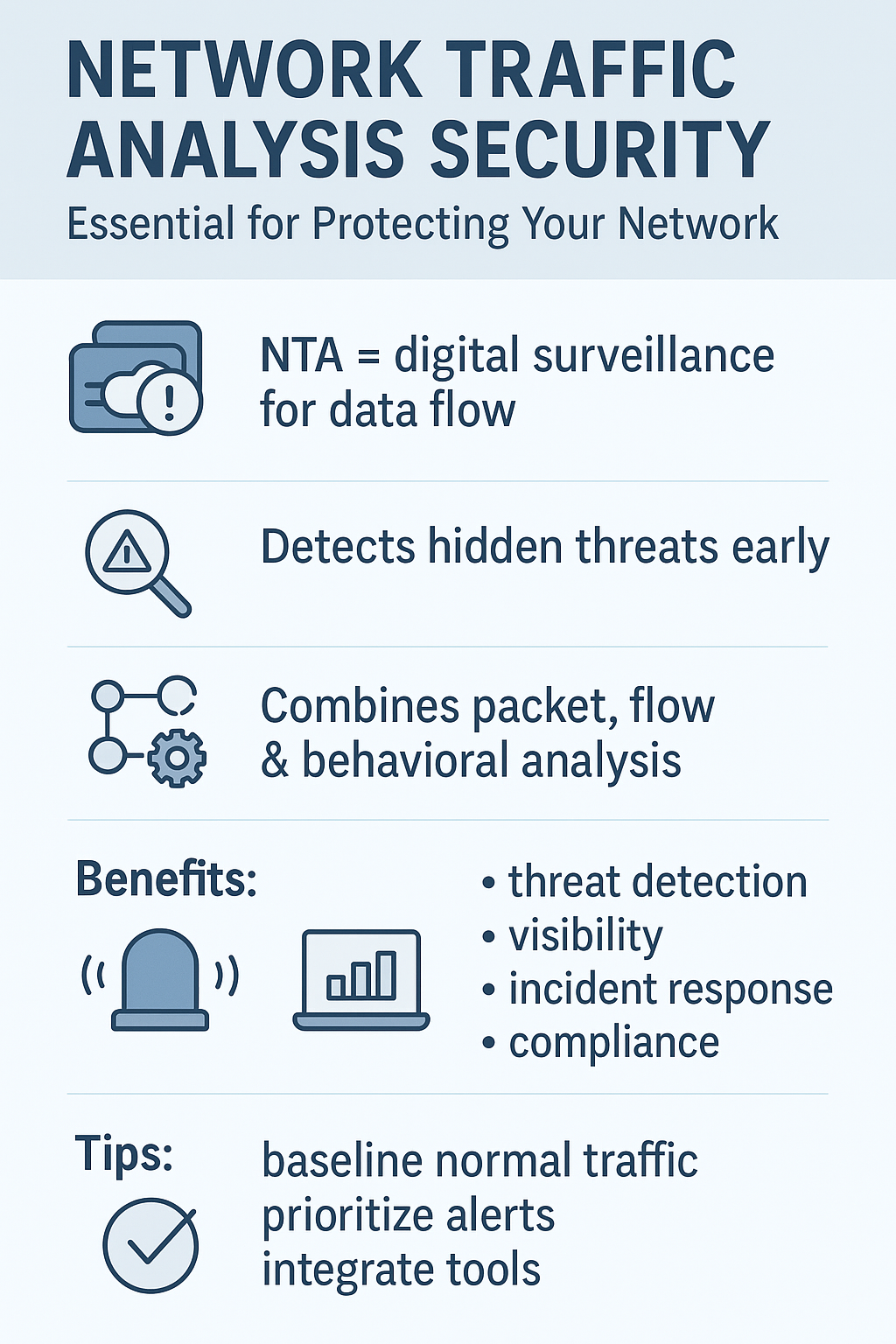Address
304 North Cardinal St.
Dorchester Center, MA 02124
Work Hours
Monday to Friday: 7AM - 7PM
Weekend: 10AM - 5PM
Address
304 North Cardinal St.
Dorchester Center, MA 02124
Work Hours
Monday to Friday: 7AM - 7PM
Weekend: 10AM - 5PM

Network traffic analysis security works like a digital surveillance system, picking up on weird stuff happening in the network’s data flow. Think of it as putting eyes on every bit of information moving through your system’s veins.
Most companies don’t realize they’re being attacked until it’s too late, by then, hackers have already made themselves at home in the network. They’re getting sneakier too, finding new ways to slip past traditional security. That’s where traffic analysis comes in, catching those subtle signs that something’s not quite right.
Want to know how to spot these digital intruders before they cause real damage? Keep reading.
The digital landscape is becoming increasingly complex. In 2024, organizations faced an average of 1,308 cyberattacks per week, a 5% increase from the previous year. [1] Security teams face mounting pressure as regulations keep piling up. A basic firewall just doesn’t cut it anymore, and here’s why:
Bad actors don’t play fair anymore. They slip through gaps in perimeter defense, plant ransomware, and wait. Sometimes they lurk in networks for months before striking. That’s exactly why network traffic analysis has become such a big deal. It helps teams see what’s actually happening inside their digital walls, not just at the edges.
Credits: Motasem Hamdan
Picture someone watching every car on a highway, noting which ones look suspicious. That’s basically what NTA does with network data. It’s not just mindless monitoring, it’s about spotting patterns that spell trouble, similar to how Managed Detection and Response services constantly track network behavior for early threat detection. The system tracks:
NTA tools work round the clock, checking millions of data points. They catch things humans might miss, like a server suddenly sending files at 3 AM or computers talking to known bad actors. Without this kind of watching, threats can hide in normal-looking traffic for weeks. The trick isn’t just collecting data, it’s knowing what to look for.

There’s more to watching network traffic than meets the eye. When you break it down, you’re really looking at three main pieces that fit together like a puzzle:
Think of this as digital detective work. Teams crack open individual data packets to see what’s inside, kind of like checking mail for suspicious contents. The most common tools you’ll see are:
Sometimes it’s not about catching attacks in real-time, it’s about figuring out what went wrong after the fact. Security folks dig through packet captures looking for weird commands or hidden malware.
This steps back to see the bigger picture. Instead of reading individual messages, flow analysis watches how traffic moves around. It’s about patterns, which computers talk to each other, how much data moves between them, and when. Think of it like watching cars on a highway from above:
Here’s where things get interesting. By watching what “normal” looks like day after day, systems learn to spot when something’s off. Maybe a printer shouldn’t be sending gigabytes of data overseas at midnight. Or why’s that laptop suddenly talking to 50 new servers?
All these pieces work together, catching different kinds of threats. Some attacks show up in packet data, others only become clear when you look at overall patterns.

We’ve found that NTA delivers several benefits that are hard to replace:
NTA is instrumental in identifying various cyber threats, including malware, ransomware, DDoS attacks, and data exfiltration. For instance, in 2024, the average cost of a ransomware breach was $5.13 million, reflecting a 13% increase from 2022. [2]
Without visibility, you’re basically flying blind. NTA gives you a comprehensive view of network activity. It reveals hidden communications, such as malware command-and-control traffic, that endpoint tools might miss.
This broad insight is essential for catching early signs of attack and understanding the scope of any breach.
When something goes wrong, detailed network records are gold. They help reconstruct how an attacker moved through the network, what data was accessed, and which devices were compromised, a process streamlined by an EDR incident investigation service that complements network traffic analysis.
NTA data supports forensic analysis, making incident response faster and more effective.
Regulations increasingly require proof of network monitoring and security controls. NTA helps demonstrate that you’re watching traffic, detecting threats, and responding appropriately.
It also provides audit trails for security reviews and legal proceedings, which reduces risk and builds trust.
Let’s walk through the typical process that powers network traffic analysis security.
First, you need to gather traffic data. This comes from SPAN or mirror ports on switches, network TAPs, or even routers and firewalls. You might capture full packets or just flow metadata, depending on what you need.
The more data you have, the better your analysis , but it also means more volume to sift through.
Once collected, data gets analyzed using a mix of rules, heuristics, and machine learning. These help filter out normal traffic and spotlight anomalies.
Our experience shows that combining automated detection with human expertise yields the best results. Machines catch patterns at scale, and analysts interpret context.
When something suspicious turns up, NTA systems generate alerts. These notify security teams to check it out quickly.
Many NTA tools also integrate with broader security platforms, feeding into SIEMs or automated response systems to speed up containment.

We’ve seen NTA catch incidents before they wreak havoc:
These examples show how NTA adds a vital layer of defense that complements endpoint security and firewalls.
You don’t have to guess which tools matter. Here are some staples:
Using these tools together gives a well-rounded view of your network’s health and threats.

To get the most out of network traffic analysis, keep these in mind:
By following these steps, you build a smarter, more responsive security posture.
Network traffic analysis plays a big role in identifying cyber threats hidden inside encrypted traffic. With tools like encrypted traffic analysis, deep packet inspection (DPI), and flow analysis, security teams can still look for suspicious activity without breaking encryption.
By combining anomaly detection, traffic metadata, and heuristic analysis, network sensors can flag abnormal port usage, malware communication detection, or shadow IT detection. Encrypted session analysis and anomaly scoring support cyber threat detection even in zero trust network access models.
Traffic baselining creates a standard model of normal network traffic patterns, which improves intrusion detection system (IDS) and intrusion prevention system (IPS) accuracy. By using flow record analysis with NetFlow or sFlow, network forensics teams can compare real-time traffic to a baseline and quickly spot network baseline deviation.
This makes anomaly detection and suspicious activity identification faster, helping prevent data exfiltration detection issues or advanced persistent threat detection delays. Network segmentation and firewall monitoring also work better when combined with traffic baselining.
Network sensors collect flow data, traffic metadata, and packet inspection details that feed into network analytics and SIEM integration. This setup provides real-time alerts and better log correlation, giving teams earlier warning of suspicious domain detection or hacker command and control detection.
When security automation and security orchestration are in place, automated threat response can cut incident response times. Forensic packet capture, network sandboxing, and behavioral analytics also support quicker decisions during cyber kill chain mapping and risk assessment.
User activity tracking provides visibility into endpoint traffic auditing and outbound traffic monitoring, both key parts of data exfiltration detection. By correlating traffic pattern analysis with device fingerprinting and unmanaged asset detection, NTA tools can highlight suspicious activity identification such as abnormal port usage or lateral movement tracking.
Network monitoring dashboards and security compliance reporting add more context, showing how bandwidth monitoring or access control events connect to suspicious domain detection. This approach helps reduce the attack surface and protect critical asset protection.
Machine learning security brings adaptive behavioral analytics and anomaly scoring to network security monitoring. While traditional IDS and IPS use rule-based packet inspection and traffic correlation, AI threat detection and network forensics can catch previously unseen threats.
ML models trained on network traffic logs, network data lakes, and traffic baselining improve cyber threat detection for advanced persistent threat detection. When paired with firewall monitoring, endpoint security, and cloud security monitoring, organizations get stronger compliance monitoring, security automation, and attack surface reduction.
Network traffic analysis (NTA) is no longer optional, it’s essential for protecting digital assets. By combining packet inspection, flow monitoring, and behavioral analytics, NTA uncovers threats early and empowers faster, more confident responses.
From compliance to proactive defense, it keeps networks resilient and risk low. If you’re serious about security, building a strong NTA strategy is a step you can’t skip.
Start your strategy with expert MSSP consulting today